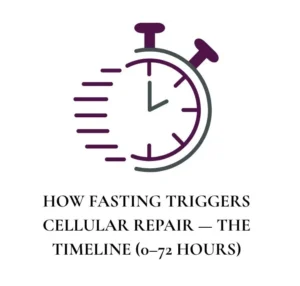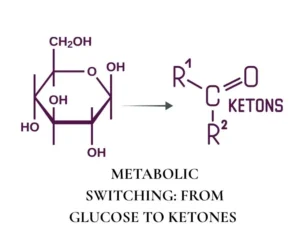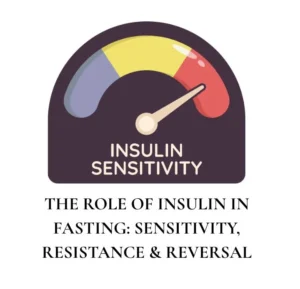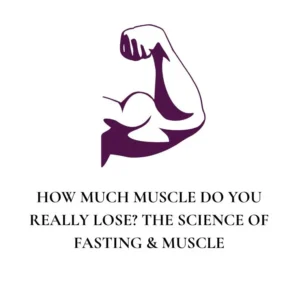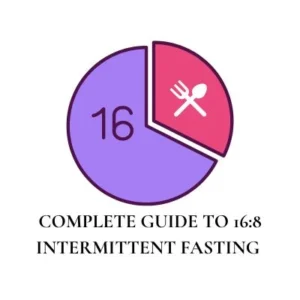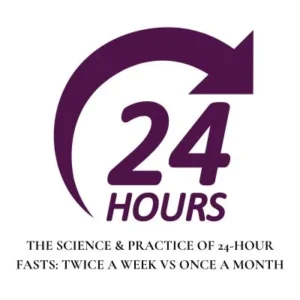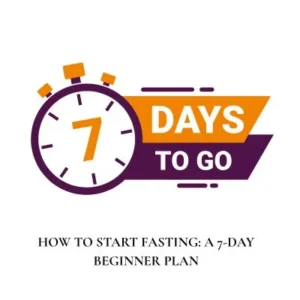If you’ve ever found yourself typing on Google —
“Best intermittent fasting schedule for weight loss,”
or “How to lose belly fat fast without starving” — you’re not alone.
We’ve all been there. Searching for that one routine, that one plan that finally makes us feel in control of our body again.
Maybe you’ve already tried 16:8 fasting or heard a friend rave about 20:4 results. Maybe you’ve been wondering if you can really skip breakfast and still stay healthy.
Table of Contents
ToggleBut here’s the truth no one talks about enough — fasting is not just a schedule. It’s a rhythm.
It’s a way of aligning your body’s natural healing cycles with the wisdom nature already built into you.
See, the Vaidik way never believed in constant eating. For thousands of years, ancient healers observed that when you give the body rest — digestion quiets down, inflammation calms, hormones reset, and your energy rises naturally.
So before we even compare 16:8, 18:6, and 20:4…
Let’s pause for a moment.
Let’s shift the question from “Which one burns fat faster?” to “Which one helps my body heal better?”
Because once you understand how your body heals through fasting, choosing the right schedule becomes effortless.
It stops feeling like a “diet” — and starts feeling like coming home to yourself again.
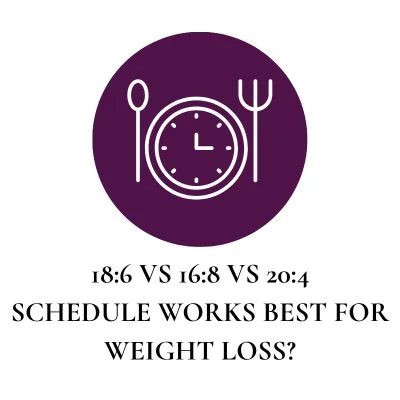
🌿 The Real Meaning Behind the Numbers
Before we jump into the details, let’s decode what these numbers actually mean.
When you see something like 16:8, it simply represents two things:
- The number of hours you fast (in this case, 16)
- The number of hours you eat (in this case, 8)
That’s it. No mystery. No magic code.
Just time windows — and the discipline to honor them.
But what’s magical is what happens inside your body during those hours of fasting:
- Insulin levels drop, allowing fat to be used as energy.
- Cells begin autophagy, a natural repair and cleanup process.
- Your metabolism recalibrates.
- Inflammation goes down.
- Energy goes up.
So, the real question isn’t which one is better, but which rhythm does your body naturally align with?
Let’s explore each one — and by the end, you’ll know exactly where to begin.
🕐 THE 16:8 METHOD — THE GENTLE INTRODUCTION
If fasting was a language, 16:8 would be the beginner’s alphabet — simple, intuitive, and effective.
How it works
You fast for 16 hours and eat in an 8-hour window.
That could mean:
- Skipping breakfast and eating between 12 PM – 8 PM, or
- Having an early window from 9 AM – 5 PM, depending on your lifestyle.
The beauty of 16:8 is its flexibility.
You can still share lunch with colleagues, dinner with family, and live a normal social life — all while allowing your body 16 hours to rest, digest, and renew.
What happens inside your body
When you first start 16:8, your body shifts from being sugar-dependent to fat-adapted.
That means instead of constantly burning glucose from snacks and meals, it begins to tap into stored fat for energy.
This process is gentle but powerful. You begin to notice:
- Steadier energy throughout the day
- Less bloating and fewer cravings
- Better focus, because your blood sugar stabilizes
For many people, this is where the journey begins — and it’s a beautiful start.
When it’s right for you
If you’re just beginning your fasting journey, have a hectic work routine, or find the idea of skipping two meals intimidating — 16:8 is your perfect match.
It’s sustainable, simple, and incredibly effective for long-term weight management.
Think of it as your foundation — once your body gets comfortable here, you’ll naturally feel ready to explore deeper rhythms.
COMPLETE GUIDE TO 16:8 INTERMITTENT FASTING — BENEFITS & MEAL PLAN
⏳ THE 18:6 METHOD — THE SWEET SPOT OF FAT-BURNING
Once your body adjusts to fasting, you may start noticing something interesting —
You don’t feel hungry as soon as you wake up anymore.
You don’t crave that evening snack.
That’s your body’s signal saying: I’m ready for more.
That’s where the 18:6 fasting window comes in.
How it works
You fast for 18 hours and eat during a 6-hour window — say 12 PM to 6 PM or 10 AM to 4 PM.
At this stage, your body spends more time in a fat-burning and repair mode, because insulin levels stay low longer.
More rest. More healing. More transformation.
What happens inside your body
- Fat loss accelerates.
Your body relies more on stored fat for energy, helping you lose weight without needing to count calories. - Autophagy deepens.
Cells begin removing damaged proteins, improving skin clarity, energy, and immunity. - Your relationship with food changes.
You eat out of nourishment, not boredom. Food becomes something you look forward to — not something that controls you.
This is often where people say, “I finally feel like myself again.”
When it’s right for you
18:6 is ideal if you’ve already practiced 16:8 for a few weeks and feel comfortable extending your fast.
It’s powerful but still manageable for daily life.
It’s the “sweet spot” — long enough to trigger deep fat burn, but short enough to sustain every day without fatigue.
At Vaidikway, we’ve seen that 18:6 works best for most people aiming for visible fat loss, hormonal balance, and mental clarity — especially women, when tailored around their cycle.
⚡ THE 20:4 METHOD — THE WARRIOR RHYTHM
Now comes the rhythm that feels bold, disciplined, and powerful — 20:4, often called the Warrior Fast.
At first glance, it might look intimidating. But once your body adapts, it feels incredibly freeing.
How it works
You fast for 20 hours and eat within a 4-hour window — typically a single, hearty meal and a small snack.
For example, you might eat between 3 PM and 7 PM, or 4 PM to 8 PM.
What happens inside your body
At 20 hours, your body spends the majority of the day in deep healing mode.
You’re not just burning fat — you’re rejuvenating your cells and hormones.
- Growth hormone levels rise, preserving muscle and accelerating fat burn.
- Mental focus sharpens, because your brain thrives in fasting mode.
- Inflammation reduces, improving everything from skin to joint pain.
But here’s the thing: 20:4 isn’t about pushing yourself — it’s about being ready for it.
When done prematurely or with poor nutrition, it can cause fatigue or hormonal imbalance, especially in women.
So, if you’re drawn to this level, do it mindfully.
When it’s right for you
Choose 20:4 when fasting already feels natural — when your body has adapted to longer fasts, and your mind feels calm around food.
It’s excellent for those seeking quick results, deep detoxification, and high energy.
But remember — fasting longer doesn’t always mean faster results.
Healing requires balance, not extremes.
🌸 Which One Works Best for Weight Loss?
Let’s be honest — that’s the question most people start with: “Which fasting schedule will make me lose weight the fastest?”
Here’s the truth — the best fasting plan is the one you can stay consistent with.
If you can’t maintain 20:4 beyond a few days, it won’t serve you.
But if 16:8 or 18:6 feels natural and peaceful, your body will reward you with sustainable results.
Weight loss through fasting doesn’t happen in a straight line.
It’s like tuning an instrument — you adjust, pause, listen, and fine-tune again.
At Vaidikway, we teach that fasting is not a contest of willpower — it’s an act of self-communication.
You’re learning to listen to your body’s whispers instead of its screams.
So, if you ask which one “works best,” the answer is:
👉 The one that helps you stay peaceful, energized, and consistent.
💫 The Vaidik Perspective — Fasting as a Healing Rhythm
Long before the term “intermittent fasting” became popular, our ancestors already practiced it.
In the Vaidik philosophy, eating was always aligned with the sun’s movement.
You eat when the sun is high — when digestion is strongest — and you rest when the sun sets.
They didn’t call it “fasting”; they called it upavasa, which literally means to stay close to oneself.
So, fasting was never about restriction.
It was about self-restoration — stepping away from constant stimulation to return to balance.
When you fast with awareness — not obsession — your body starts remembering that ancient wisdom.
It starts healing naturally — your metabolism resets, your hunger stabilizes, and your mind clears.
Fasting isn’t a new trend; it’s our body’s oldest instinct for repair.
🌿 How to Find Your Perfect Fasting Window
If you’re wondering where to start — here’s a simple reflection process we use at Vaidikway:
- Listen to your mornings.
Do you wake up hungry or can you comfortably delay breakfast?
If you’re fine skipping it — you’re ready for 16:8 or 18:6. - Notice your energy mid-day.
If your energy crashes too soon, try shorter fasts until your metabolism adjusts. - Track your sleep.
Late-night eating affects sleep quality and hormone repair.
The earlier you close your eating window, the better you’re healing. - Don’t jump windows too fast.
Moving from 16:8 to 20:4 overnight can stress your system.
Give your body at least 2–3 weeks to adapt each time. - Personalize, don’t copy.
Your fasting window should align with your life, not Instagram trends.
Shift it based on your work, sleep, and menstrual cycle.
At Vaidikway, we help you find a fasting rhythm that fits your biology and your emotions — because both matter equally.
🪷 What You Might Experience Along the Journey
As your body adjusts, it will speak to you — not in words, but in sensations.
You might notice:
- Hunger fading from panic to peace
- Mental clarity rising like morning light
- Clothes fitting more comfortably
- Sleep feeling deeper
- And a quiet joy — the kind that comes when you realize you’re in control again.
This is the transformation fasting brings.
Not just a smaller waist — but a lighter mind, and a calmer relationship with food.
🌺 Gentle Reminders from the Vaidikway
- Don’t chase fasting hours. Chase balance.
- Don’t skip nourishment. Eat whole, clean, vibrant foods.
- Don’t ignore emotions. Healing isn’t just physical.
And most importantly — remember that fasting is not about restriction, it’s about rhythm.
Once you align your fasting window with your natural energy flow, your body begins to heal — on its own, gracefully, and powerfully.
✨ Ready to Find Your Fasting Flow?
If this resonated with you — if you’re tired of confusion and just want clarity — let’s find your personal fasting rhythm together.
Because you deserve to feel light, focused, and free in your own body again.
🌿 At Vaidikway, we don’t just teach fasting — we help you live it as a lifestyle.
Rooted in ancient wisdom. Tailored for your modern life.


